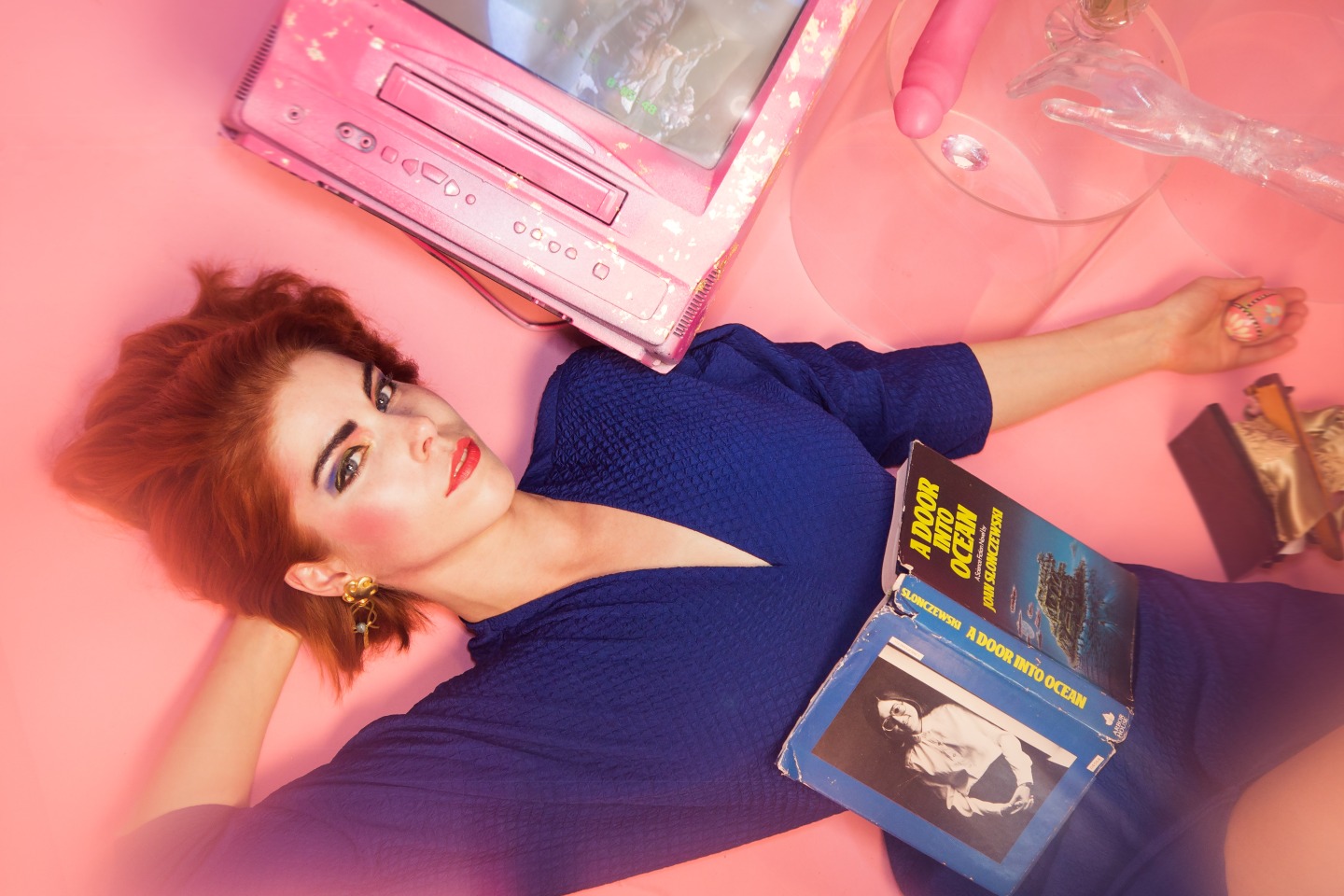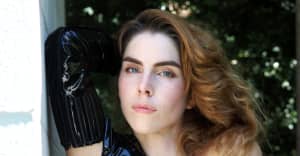Meet Ziemba, The Musician Using Fragrance To Shape Time And Space
The New York artist tells the story behind her new release: a sonic fragrance mist titled “A Door Into Ocean.”
 Ziemba
Photo by Megan Mack
Ziemba
Photo by Megan Mack
Nothing sparks memory like scents or songs. Someone who knows this better than most is New York artist Ziemba. Last summer she released an incense that included the fragrances of flowers plucked from her childhood home; it accompanied her album Hope Is Never. Now she's upping the sensory ante once again with a "sonic fragrance mist" titled "A Door Into Ocean" (inspired by Joan Slonczewski's feminist sci-fi novel) that comes in both aromatic and auditory versions. The latter is premiering on The FADER below — a layered caress of a soundscape — and the equally gentle perfume will be available to purchase on Ziemba's tour (dates below).
I caught up with Ziemba over email to find out the story behind "A Door Into Ocean," how Slonczewski inspired her, and why fragrance is such a potent artistic force for her.
You're putting out your new song with a "sonic fragrance mist." What is that and why did you decide to release them together?
I see fragrance as a strategic site for feminist art. I love that scent is a nonlinear experience; it operates under a logic of associative memory, feeling-tone, symbol, and poetry. It provides an oozy spatial architecture that's ephemeral, situated, non-binary, and corporeal.
The sonics of "A Door Into Ocean" are meant to inhabit space in the same way that fragrance does; it’s not really a finite song, more an exploration of a place. It’s another oozy architecture. "A Door Into Ocean" may be listened to on repeat while stretching or relaxing, lingering in its mist; or as a fragment, a sample, a layer in a panoply of sounds. The intention of making a sonic fragrance is to play with perceptions of space and the body: to ground the listener in whatever space they inhabit while also transporting them, drawing their perception toward the realm of the intuitive and sensuous.
This fragrance is an aphrodisiac and helps with insomnia and anxiety; so the physiological experience of "A Door Into Ocean" is very much a spring-fever supplement.
The song and fragrance are named after Joan Slonczewski's feminist sci-fi novel. What part of the book inspired you to write the song?
I was inspired by the linguistic system of the novel, A Door Into Ocean, which takes place on a planet solely inhabited by women, without landmass, only ocean. In this novel, there is no capacity for violence because their linguistic system understands identity through connection. There is no linguistic way to express inflicting something upon someone else, without necessarily also inflicting that thing upon yourself.
I’m interested in political and social commentary that is uplifting and future-visioning; science fiction is really helpful in that regard. When I think about forms of communication that currently exist on earth that are necessarily nonviolent and emphasize interconnectivity, fragrance is a good example of that. How can we think about building shared understandings that aren’t centered around dominance, hyper-individualism, and stratification? One possible step is growing our attentiveness to connections across time and space, and destabilizing our ocular-centricity, our text-centricity.
"A Door Into Ocean" features the LIGO chirp, which is the sound of gravitational waves as two black holes collide into one another. Documentation of this sound last year was seen as a revolution in physics, evidence for Einstein’s theory of general relativity. If this “sonic fragrance mist” is a place, then our human location is fixed at a nexus in time and space. We are that point at which the ripple effect begins to spread outward; we can be very tenderly weaving the fabric of time.
 Ziemba
Photos by Megan Mack
Ziemba
Photos by Megan Mack

This new work from you is one in a line of releases that combine music with scent-based objects. How does that fit into the larger artistic statement you want to make?
I love working with fragrance because it connects you to space and material awareness in a visceral and sentimental way; this means that something long since dead, a flower or a tree, may come back to life in a completely new space, and become a part of you, through your nose, through your skin. You can have a dialogue with this flower, even in some remote corner of a concrete jungle.
My first release that combined music and scent-based objects was the incense that I made for my full-length, which contained flowers from the yard of my childhood home. In this way, I was trying to share more than the sound of the music, but the feelings of loss and nostalgia that these songs were rooted in. And through doing that I became very excited by the potential of fragrance for shaping and rebuilding spaces.
I think about performance and music primarily in terms of spatial context and the body. Some of this can be credited to my background in feminist geography, because my past studies of the gendered body in space have definitely informed how I construct performative environments.
Founding my multisensory imprint this past fall, Ardis Multiverse, was part of this drive toward making music that is a living (and sometimes mythic) place. Releasing digital music can feel lifeless or sterile, and I look at songs and music as being so vibrant and alive. They are powerful beasts, and can shape reality so vitally; I want to equip them with all the possible arsenal that they may need for parading out into the world.
I'm working right now on a new album, which also draws heavily from feminist science fiction in constructing transcendent and hopeful sonic spaces. That release will have a mapping project attached to it, in addition to a multisensory release. The bigger artistic statement here is that I'm proactive about fleshing out fantasy, materializing the oozy architecture of dreams.
Tour dates
3/26 Baltimore, MD
3/28 Roanoke, VA
4/5 Nashville, TN
4/6 Cincinnati, OH
4/7 Lexington, KY
4/8 Harrisburg, PA
4/9 Philadelphia, PA
4/14 Queens, NY (Knockdown Center with Pavo Pavo, Charlie Looker Ensemble)
